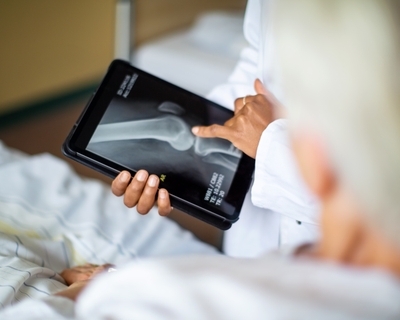
More than 100 million Americans have bunions, putting it among the most common foot problems in the U.S. And it hits women far more often than men.
Dr. Snow Daws, who specializes in foot and ankle care at her orthopedics and sports medicine clinics in Kernersville, High Point and Greensboro, sees cases walk into her office on a regular basis. We spoke with her about what causes bunions and the best treatment options.
What’s a bunion?
It’s a bony deformity in the forefoot, known medically as hallux valgus. The forefoot is made up of two types of bones – toe bones, known as phalanges, and long bones, or metatarsals. A bunion occurs when the long bone/first metatarsal moves outward, while the big toe itself moves inward toward the second toe. The overall effect is that the forefoot is widened.
Injured? Hurting? Get walk-in orthopedic care.
In mild bunion cases where the pain is tolerable, patients will often begin looking for more comfortable shoes. But in more serious cases, changing shoes no longer eases the condition. As cases worsen, it often becomes too painful to participate in activities like yoga, dancing or running. In some instances, even walking can be intensely painful.
What causes bunions?
Genetics and shoe wear are the primary causes of bunions. Flat footedness, underlying soft tissue disorders, traumatic injury or turf toe (a sprain of the big toe often caused by a sports injury) are secondary causes.
Who’s at risk?
What are the treatment options?
What are some common misconceptions?
- Many people will refer to any lump on the foot as a bunion, but a bunion is actually a bony deformity of the forefoot, not a growth or bump.
- A bunionette or a tailor’s bunion is an example of another toe bump that’s found on the outside of the little toe.
- When a patient has arthritis in a big toe that’s straight, it doesn’t mean a bunion is present.
- An arthritic patient may mistake a bone spur on the top of the foot for a bunion.
- There’s also the misconception that bunion surgery is done to cut off the bony growth when it’s actually a straightening and realigning of the big toe.









